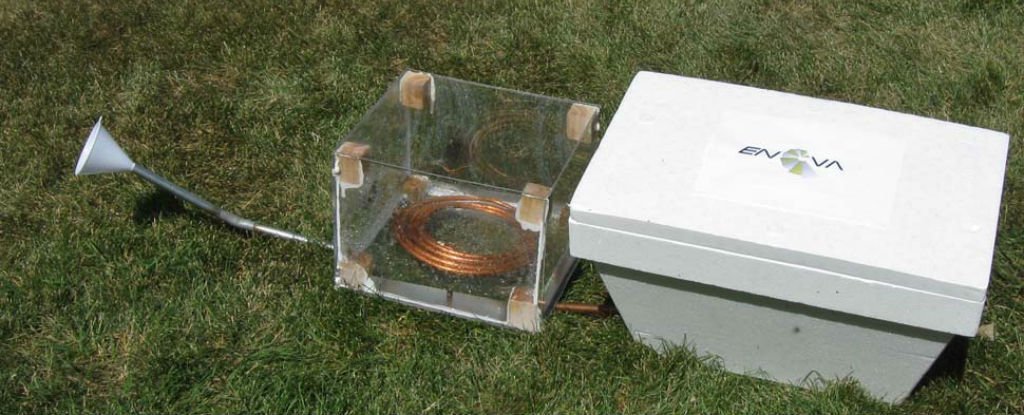Source: huffingtonpost.ca
Published: November 23, 2015

The WindChill fridge uses evaporation to keep food cool. (Photo: WindChill/Biomimicry.org)
The invention was inspired by how some animals regulate their body temperature and can help solve global food waste.
By Sarah Rieger:
Four University of Calgary students have invented a fridge that doesn’t require electricity to run.
Their project won an international competition that seeks nature-inspired solutions to sustainability problems.
The project, named WindChill, won the Biomimicry Global Design Challenge‘s student category.
The invention was inspired by how some animals regulate their body temperature. The team from U of C aimed to create an easy, inexpensive solution to food spoilage, which disproportionately affects people in hot climates.
Team members — Jorge Zapote, Mitchell Weber, Xi Cheng and Michelle Zhou — factored different ways animals cool themselves off into their design.
First, similar to an elephant’s ear, the machine uses a funnel to catch air and bring it into a pipe immersed in fluid. The fluid around the coil evaporates, cooling the air inside. Then, it moves to a below ground refrigeration chamber to chill the food.
The last step was inspired by how meerkats burrow into the ground to avoid heat.
“Anywhere from a quarter to half of the world’s food goes to waste every year,” said Zapote in a video pitch for the project.
It’s a design that’s easy to set up, and requires almost no instruction or maintenance.
Click Here to watch “Wind Chill: food preservation unit”: https://vimeo.com/135330470
Wind Chill: food preservation unit from ENOVA Calgary on Vimeo.
WindChill “is a tool for not only keeping food at low temperatures, but also for changing the lives of the people that use it,” reads the project’s description.
Evaporative fridges made of two clay pots nestled together are already common in Africa and the Middle East, but the WindChill project improves on the design in two ways — the air intake, and the below ground design which aids temperature maintenance.
The next step for the Calgary students is to create a prototype and to hit their temperature goal of 4.5 degrees Celsius to ensure food won’t spoil.
